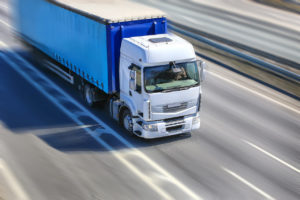How does telematics work?
The application of telematics in practice would not be possible without first installing appropriate equipment whose function is to read, analyze, store and transmit telematics data.
Telematics systems must include precisely the monitoring device, which – in the context of transport telematics – collects GPS data, fuel consumption data, vehicle speed and even startup time. This device must be installed in the vehicle from which it will collect information. As they work, they are sent to a server, which in turn transmits them to their destination (for example, to a control application displayed by an employee residing at the base of the transportation company).
A necessary element for the smooth operation of a telematics system is also appropriate software for processing the acquired data.
Telematics – characteristic elements
Telematics solutions incorporate many elements characteristic (and actually necessary) for modern enterprises. Thus, they facilitate the management of the company by, among other things:
- rapid exchange of information between locations, employees, teams, vehicles or equipment;
- efficient data transmission;
- Remote control of time and quality of work;
- remote management.
We will talk about how telematics uses the collected data later in the article.
What are the characteristics of transportation telematics?
Transportation telematics is a set of solutions that help transportation companies deal with problems that may occur during the execution of a trip. Appropriate use of telematics data will therefore solve issues such as route optimization, control of drivers’ working hours or dynamic response to unforeseen situations (breakdowns, collisions, etc.) in real time.
It is the fact that the vehicle remains in constant communication with the headquarters that allows changes to be made on the fly to maximize the driver’s work and the execution of the transport order.
The transportation industry also uses the term “ITS systems” – This term describes tools for improving transportation efficiency and can be considered a component of telematics.
Important!
An abbreviated definition of transportation telematics could thus be: transportation telematics is the use of telecommunications and information technology to manage transportation as efficiently as possible.
What can a telematics system consist of?
A telematics system is a conglomeration of smaller components that, when combined, produce measurable results – for example, in the form of increased number of completed trips or measurable savings. Most commonly, a telematics system will include:
- Connectivity (Internet, GSM networks, radio communications, GPS);
- databases (geographic, road, weather);
- monitoring devices (traffic, vehicle functions) and sensors necessary for their proper operation;
- Street cameras and traffic radars;
- Software to manage and process the acquired data.
What are the benefits of telematics?
There is a reason why telematics systems are becoming increasingly popular in transportation companies. Monitoring the function and location of vehicles in real time, constant communication with drivers, optimization of routes due to road conditions, traffic volume or the course of road works – all this adds up to a number of benefits, such as:
- Lowering costs – telematics can be used to determine optimal routes, achieve lower fuel consumption and even avoid traffic jams – just the beginning of the possibilities that affect the final cost of a trip. For companies making hundreds, if not thousands, of trips per month, every few zlotys saved per trip adds up to a tangible savings visible at the end of the accounting period.
- Optimization of freight management – telematics enables the implementation of advanced fleet management techniques. They translate not only into savings in financial terms, but also into selecting more favorable orders, planning safer routes or greater comfort for drivers. Thus, it works to the benefit of the company in the long term.
- Cheaper transportation insurance – insurers take into account whether a company has decided to use telematics in road transportation. Insurance companies’ risk assessments can vary dramatically depending on whether or not the company uses telematics systems.
Transport telematics – summary
It’s not hard to see that telematics in the transportation industry should be an integral part of any business dealing with transportation these days.
Smart telematics systems can be used in a variety of ways – including:
- To manage a fleet of vehicles,
- Monitoring of vehicles and their condition,
- providing traffic information to drivers,
- and even to – through appropriate use of available data – positively influence driving safety.
In this context, telematics is a real opportunity for businesses to implement solutions that not only promise, but actually guarantee huge benefits, including tangible savings.


